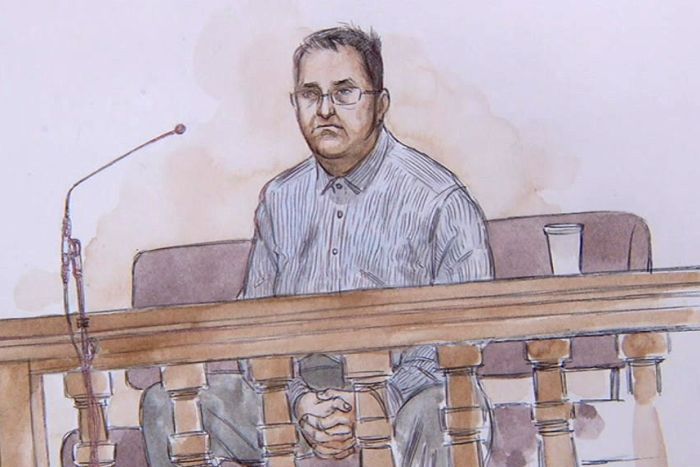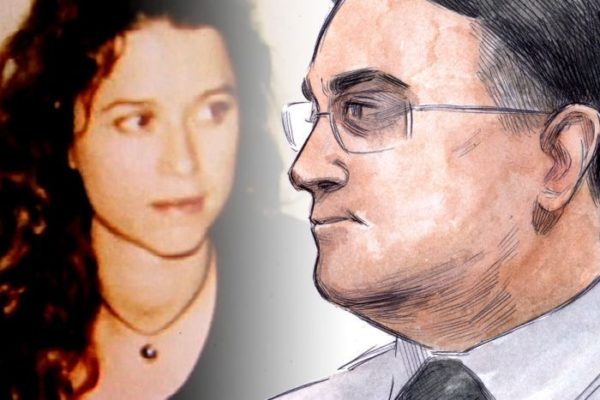
By Andrea Mayes
 Photo: Bradley Edwards is accused of murdering Ciara Glennon after allegedly abducting her in Claremont. (ABC News)
Photo: Bradley Edwards is accused of murdering Ciara Glennon after allegedly abducting her in Claremont. (ABC News)A world-renowned expert in DNA profiling has delivered a blow to accused Claremont serial killer Bradley Edwards, telling his triple-murder trial that DNA matching him was exposed to the same environmental degradation as DNA from his alleged third victim, Ciara Glennon.
Key points:
- Bradley Edwards is accused of killing three women in the 1990s
- His DNA was found under the fingernails of the third alleged victim
- His lawyers claim it got there through laboratory contamination
The revelation has cast doubt on suggestions made by Edwards’s lawyers that his DNA was found on Ms Glennon’s fingernails through contamination while the forensic evidence was being examined.
Jonathan Whitaker, who flew in from the UK to testify in Edwards’s trial, was a scientist at the Forensic Science Service (FSS) in England for 23 years before it closed in 2012.
Edwards, 51, is accused of murdering Ms Glennon, 27, 18-year-old receptionist Sarah Spiers and 23-year-old childcare worker Jane Rimmer in 1996 and 1997.
The women all went missing late at night after leaving friends in the Claremont entertainment precinct, in Perth’s leafy western suburbs.
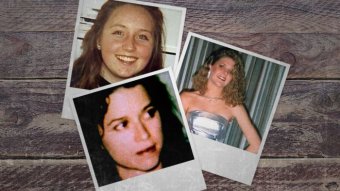
Sarah Spiers. Jane Rimmer. Ciara Glennon. Three women whose names were etched into Perth’s consciousness more than 20 years ago.
Scientists at FSS made a critical breakthrough in the case in 2008 when they discovered male DNA on a combined sample of two of Ms Glennon’s fingernails.
The male DNA profile was later matched to Edwards and it is the only DNA evidence directly linking him with the murders.
Defence contamination claim tested
Edwards admits it is his DNA on the sample but disputes how it came to be there, with defence counsel Paul Yovich SC having suggested the fingernails could have become contaminated while they were being analysed at state pathology laboratory PathWest.
Edwards’s DNA was already being held by PathWest when Ms Glennon’s fingernail samples came into the lab after the discovery of her body in April 1997, in the form of samples taken from a teenager he raped in Karrakatta Cemetery two years earlier.
Mr Yovich has suggested DNA from the rape samples could have somehow been transferred to the fingernail samples while at PathWest.
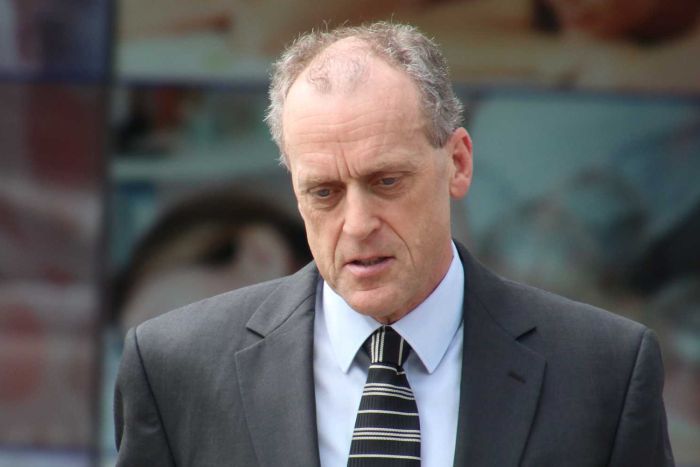 Photo: Jonathan Whitaker was a forensic scientist in the UK involved in the breakthrough discovery of Bradley Edwards’s DNA profile underneath Ciara Glennon’s fingernails. (ABC News: David Weber)
Photo: Jonathan Whitaker was a forensic scientist in the UK involved in the breakthrough discovery of Bradley Edwards’s DNA profile underneath Ciara Glennon’s fingernails. (ABC News: David Weber)Dr Whitaker said the DNA found on the fingernails was mixed-profile DNA, matching both Ms Glennon’s profile and that of Edwards, and both components of the DNA had degraded in the same way, suggesting they had been exposed to the same environmental conditions.
Dr Whitaker said there was “no evidence of a third person” being present in the DNA obtained from the fingernails.
The rape samples contained Edwards’s DNA as well as those of the 17-year-old victim, and a question from prosecutor Carmel Barbagallo SC to Dr Whitaker about whether there was a third person’s DNA detected on the fingernails also appeared to be aimed at quashing the defence’s argument that the rape samples could have contaminated the Glennon samples.
Same DNA test used in Falconio case
Earlier, Dr Whitaker told the court he was involved in developing a new type of DNA test in the early 1990s called Low Copy Number (LCN) testing, which enabled DNA to be extracted from even tiny samples of material.
LCN has since been used in high-profile cases around the world, including the 2001 murder of Peter Falconio by Bradley Murdoch in the Northern Territory.
In that case, Dr Whitaker detected tiny traces of DNA on the cable ties used to bind Mr Falconio’s girlfriend, Joanne Lees.
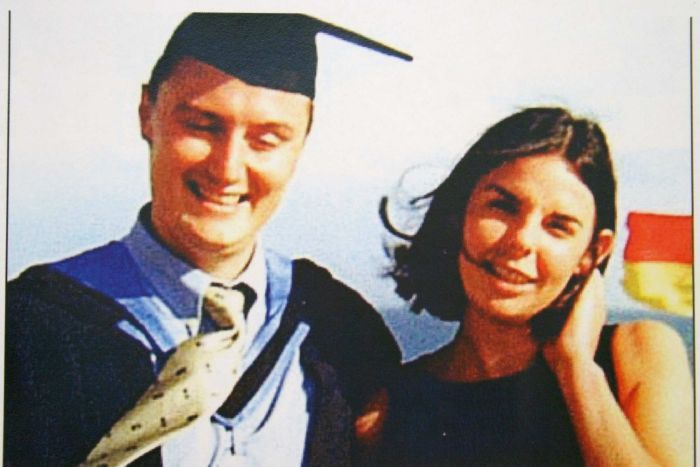 Photo: DNA found on Joanne Lees was crucial in convicting the murderer of English backpacker Peter Falconio. (AAP)
Photo: DNA found on Joanne Lees was crucial in convicting the murderer of English backpacker Peter Falconio. (AAP)Samples from Ms Glennon’s fingernails were sent to the FSS for testing in 2008 using LCN — a process not available in Australia at the time — after a police cold case review of the Claremont investigation.
Dr Whitaker said he was aware of the importance of the case from the outset and FSS had tried to do “everything it could” to get a result out of the samples.
Because of the tiny size of the samples, Dr Whitaker said the decision was made to combine the two fingernail scrapings from Ms Glennon’s left hand, known as AJM 40 and 42, “simply to try and increase the amount of biological material that would be available”.
Pooling the two samples would make it impossible to tell which fingernail the DNA had come from, but Dr Whitaker said if they had not been combined, there might have been no result at all.
“The strategy going forward was all about trying to maximise any DNA that was there to get a result,” he said.
Close attention on expert evidence
Edwards appeared to focus closely on Dr Whitaker’s evidence from the dock today, watching the scientist at times intently as he testified and taking notes.
A teenager raped by Edwards in 1995 — now aged in her 40s — was also in court to hear Dr Whitaker’s evidence, along with another woman who as a teenager survived a 1988 attack by Edwards as she slept at her Huntingdale home.
The women sat together, flanked by detectives from the long-running case.
Ms Glennon’s father Denis and sister Denise were also in the public gallery, as were Edwards’s parents.
The DNA portion of the case is almost finished, with the marathon trial — now in its 14th week — set to move onto evidence relating to fibres found in the hair of both Ms Glennon and Ms Rimmer next week.
The prosecution says these fibres match fibres from Edwards’s work-issued clothing and the inside of his car.
The trial, before Justice Stephen Hall, will resume on Tuesday.
Topics: murder-and-manslaughter, law-crime-and-justice, courts-and-trials, perth-6000, wa, claremont-6010
